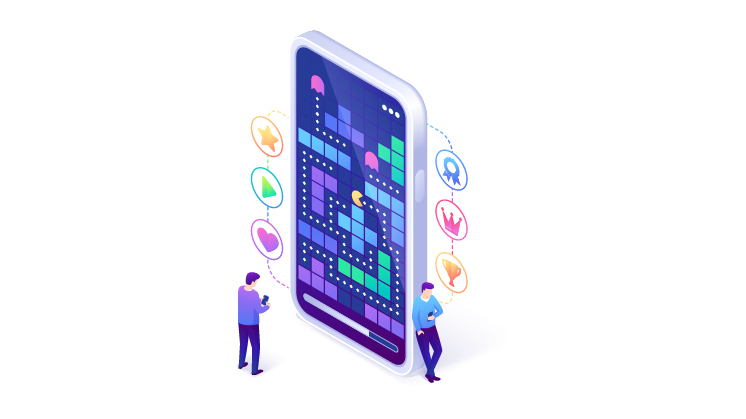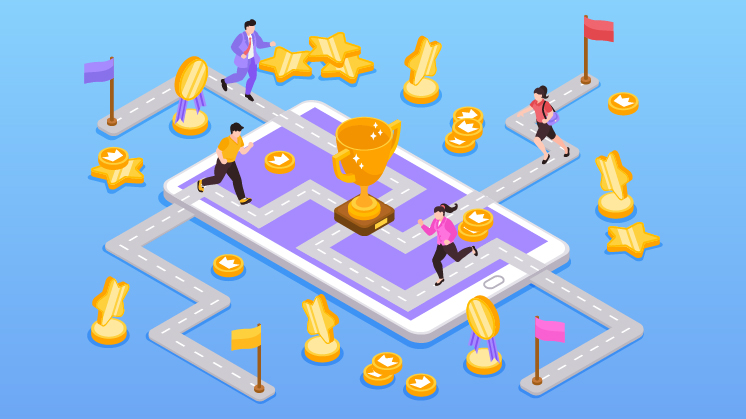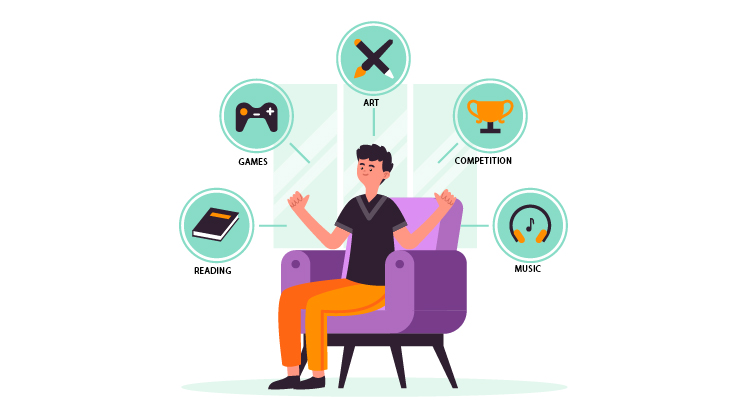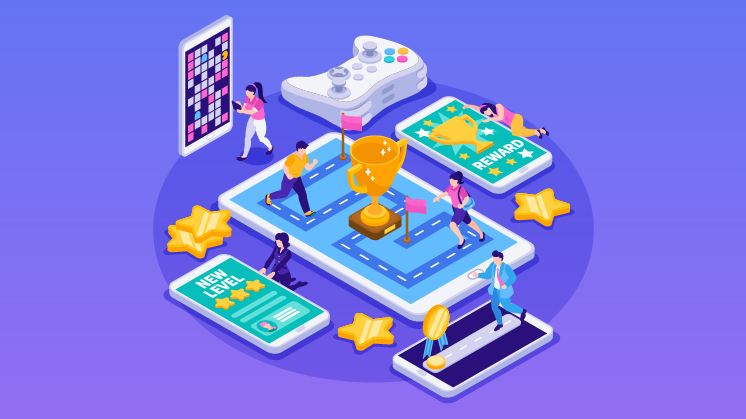
Imagine a remote work environment where employees consistently motivate, engage, and exceed expectations. Does this sound too good to be true? Well, what if we told you that incorporating multiple examples of gamification could achieve this level of productivity and satisfaction within your remote team?
The Challenge of Remote Work Engagement
A recent study by Owl Labs found that 38% of remote workers reported feeling lonely or isolated.
Maintaining engagement and motivation in a geographically dispersed workforce can be challenging. While essential, traditional methods like emails and video calls sometimes fail to create a sense of community and purpose.
This is where gamification steps in as a powerful tool to transform the remote work experience.
Gamification refers to applying game-like elements (points, badges, leaderboards) in non-game contexts. Incorporating different examples of gamification into a workplace can create a motivating environment for remote employees.
The Psychology Behind Gamification’s Effectiveness
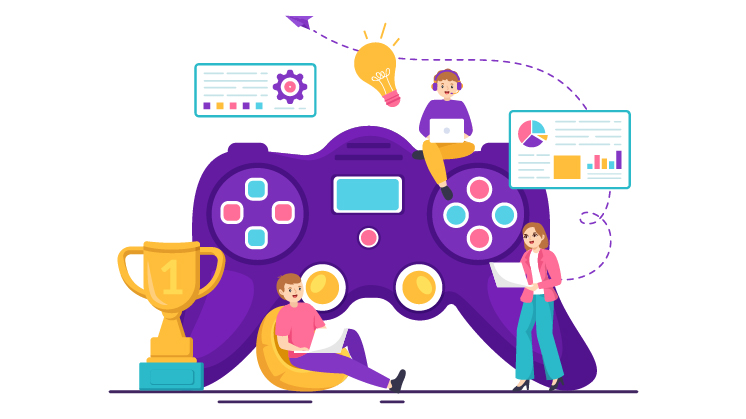
Gamification taps into our inherent desire for achievement, recognition, and healthy competition.
Earning points for completing tasks, receiving badges for milestones achieved, or competing with colleagues on a leaderboard can trigger the release of dopamine, a neurotransmitter associated with pleasure and reward. This increases motivation and drives employees to keep striving for more.
7 Inspiring Examples of Gamification in Remote Work
Gamification offers a versatile toolbox for boosting engagement in various aspects of remote work. Here are 7 inspiring examples of gamification to spark your creativity:
Gamified Onboarding & Training
Challenge:
New remote employees often struggle to stay engaged during onboarding and training processes.
Gamification Solution:
- Points and Badges: You will receive points for completing onboarding modules and badges for achieving milestones, such as finishing core training courses.
- Interactive Elements: Incorporate interactive quizzes or role-playing scenarios to test knowledge and make learning more engaging.
- Leaderboards: Consider a friendly leaderboard to showcase top learners, fostering a spirit of healthy competition (use caution to avoid discouragement for slower learners).
Example: A marketing agency uses a points system to complete onboarding modules. Employees can redeem points for virtual rewards like company swag or gift cards to online learning platforms.
Gamified Goal Setting & Task Management
Challenge:
Traditional goal-setting and task-management tools can feel mundane for remote workers.
Gamification Solution:
- Progress Bars & Points: Implement progress bars for individual and team goals, with points awarded for completing tasks or reaching milestones.
- Team Challenges: Organize team challenges around specific goals, like completing a project within a set timeframe or achieving a high customer satisfaction rating.
Example: A software development team uses a gamified project management tool. Team members earn points for completing tasks, and at the end of the week, the team with the highest collective points receives a virtual team lunch voucher.
Gamified Communication & Collaboration
Challenge:
Encouraging active participation and fostering a sense of community can be difficult in remote communication channels.
Gamification Solution:
- Points & Badges: Award points for actively participating in discussions, such as providing helpful answers or starting thought-provoking threads. Create digital badges for valuable contributions like “Team Player” or “Knowledge Sharer.”
- Team Challenges: Organize virtual team-building activities or challenges that encourage collaboration and communication. This could involve brainstorming sessions, online escape rooms, or collaborative knowledge-sharing initiatives.
Example: A customer service team uses a points system to make helpful contributions to their internal communication platform. The employee with the most monthly points receives a dedicated “Work From Home” wellness package.
Gamified Performance Recognition & Rewards
Challenge:
Traditional performance reviews and recognition programs may not resonate as effectively with remote employees.
Gamification Solution:
- Points & Badges: Award points for exceeding expectations, achieving key performance indicators (KPIs), or going the extra mile. Create badges for specific accomplishments, such as “Top Performer” or “Client Champion.”
- Leaderboards: Consider a leaderboard to showcase top performers for a specific period (use caution to ensure healthy competition and avoid discouraging lower performers).
- Redemption System: Employees can redeem points earned through one of the examples of gamification for virtual rewards or gift cards. This could include company swag, subscriptions to online learning platforms, or even charitable donations on their behalf.
Case Study: A sales team utilizes a gamified CRM system. Sales representatives earn points for exceeding sales targets and closing deals. These points can be redeemed for virtual rewards or to participate in a monthly raffle for a high-end gadget.
Gamified Wellness & Wellbeing Programs
Challenge:
Maintaining a healthy work-life balance and encouraging healthy habits can be challenging for remote employees.
Gamification Solution:
- Points & Badges: Award points for completing daily step goals tracked through fitness trackers or participating in online fitness challenges. Create badges for achieving milestones like completing a set number of workout sessions or logging a specific number of walking/running miles.
- Leaderboards (Optional): Consider a friendly leaderboard to showcase the most active team members (use caution to avoid pressuring individuals with limitations).
- Virtual Rewards: Offer virtual rewards for completing wellness challenges, such as extended paid time off, healthy meal delivery vouchers, or discounts on fitness subscriptions.
Example: A design team uses a gamified wellness app. Team members earn points for completing daily mindfulness exercises or participating in virtual yoga sessions. They can redeem their points for company-branded wellness gear or donations to a charity of their choice.
Gamified Internal Communication & Company Culture
Challenge:
Building and maintaining a strong company culture can be difficult when employees are geographically dispersed.
Gamification Solution:
- Points & Badges: Award points for employee referrals or participation in company events. Create badges for embodying company values or demonstrating exceptional teamwork.
- Team Challenges & Trivia: Organize virtual team-building activities or trivia contests related to company history, products, or values. This can be a fun way to promote knowledge sharing and community.
- Social Recognition: Highlight employee achievements and gamification wins within the company communication channels to foster a sense of camaraderie and belonging.
Example: A marketing agency uses a gamified communication platform. Employees earn points for sharing company news on social media or participating in internal discussions. They can redeem their points for virtual coffee breaks with senior management or team lunches.
Gamified Feedback & Learning
Challenge:
Providing and receiving feedback can be a delicate process in a remote work environment.
Gamification Solution:
- Points & Badges: Award points for providing constructive feedback to colleagues or completing self-assessment exercises. Create badges for “Thoughtful Feedback Giver” or “Continuous Learner.”
- Gamified Quizzes or Challenges: Design interactive quizzes or challenges based on feedback received to reinforce learning and knowledge retention. This can be a more engaging way to solidify understanding of best practices or new procedures.
Example: A customer support team uses a gamified feedback platform. Support representatives earn points for offering constructive feedback to peers on call recordings. They can redeem these points for participation in online customer service training courses.
Frequently Asked Questions (FAQs) About Gamification in Remote Work
Implementing gamification in your remote work environment might spark some questions. Let’s address some of the most frequently asked ones:
Q1. Is gamification appropriate for all types of remote work?
A: Gamification can be a valuable tool for most remote work settings. However, it’s essential to tailor your approach to your team’s specific needs and culture. Consider the type of work your team does and the overall company culture before implementing gamification strategies.
Q2. How can I avoid making gamification feel forced or childish?
A: The key is to strike a balance. Focus on incorporating gamification elements thoughtfully and strategically to enhance engagement without diminishing the professionalism of the work environment. Here are some tips:
- Focus on Meaningful Rewards: Offer your team members relevant and valuable rewards, such as professional development opportunities or flexible work arrangements.
- Maintain Transparency: Communicate the goals and objectives of your gamification program.
- Keep it Optional: Allow employees to opt out of gamified elements if they prefer.
Q3. What are some metrics to track the success of gamification initiatives?
Here are some key metrics to consider:
- Employee Engagement: Track participation rates, activity levels within the gamified system, and overall employee sentiment.
- Performance: Monitor if gamification improves productivity, goal achievement, or customer satisfaction.
- Teamwork & Collaboration: See if gamification fosters increased collaboration, communication, and a stronger sense of community within the team.
Q4. How can I ensure gamification is inclusive for all team members?
Here are some tips for ensuring inclusivity:
- Offer a Variety of Challenges & Activities: Cater to different interests, skill sets, and comfort levels with physical activity.
- Focus on Intrinsic Motivation: Emphasize the sense of accomplishment and progress over competition.
- Provide Opt-Out Options: Allow employees to choose their level of participation without feeling pressured.
Ending Note
Gamification is a powerful tool for transforming the remote work experience. By strategically incorporating game-like elements, you can motivate your team, foster a stronger company culture, and ultimately achieve greater success. As remote work continues to evolve, the above examples of gamification have the potential to revolutionize how we engage, motivate, and empower our off-site workforces.
